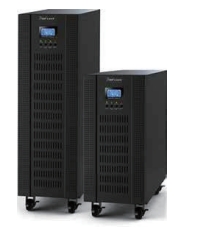language
In an age where so much of our work, communication, and entertainment happens through personal computers, power interruptions can be more than just an inconvenience—they can lead to data loss, hardware damage, and system crashes. Whether you're working remotely, gaming, or managing important files, investing in the best home UPS (Uninterruptible Power Supply) for computer use is a smart move.
But with so many models on the market, how do you choose the right one? The key lies in understanding which features truly matter. In this article, we'll cover the essential features you shouldn't ignore when selecting a UPS for your home computer setup.

1. True Power Capacity (VA and Watts)
The most important specification of any UPS is its power capacity, typically measured in volt-amperes (VA) and watts (W). Your computer, monitor, external drives, and network devices all consume power. A good rule of thumb is to add up the total wattage of all devices you want to connect and choose a UPS with at least 20–30% more capacity than your total load.
Look for a UPS in the 600VA–1500VA range for a standard home desktop computer setup.
2. Battery Backup Runtime
The runtime of a UPS determines how long your computer can stay powered during an outage. While most home UPS units are designed to provide 5–15 minutes of backup, this is usually enough time to save your work and shut down safely.
If you're looking for longer runtime—perhaps to finish a task or continue working during short outages—consider a model with extended battery options.
3. Automatic Voltage Regulation (AVR)
Not all power problems are complete outages. Voltage dips (brownouts) or spikes can silently damage your computer over time. A UPS with AVR (Automatic Voltage Regulation) automatically corrects minor fluctuations in voltage without switching to battery mode, offering protection and efficiency.
This feature is especially useful in areas where utility power is unstable or inconsistent.
4. Pure Sine Wave Output (for Sensitive Devices)
Many modern computers, especially gaming rigs and high-performance PCs, use active PFC (Power Factor Correction) power supplies. These systems work best—and sometimes only safely—with pure sine wave output from the UPS.
If you’re using high-end equipment or a computer with a sensitive power supply, make sure your UPS provides pure sine wave output rather than simulated sine wave.
5. Multiple Battery-Backup and Surge-Only Outlets
Look for a UPS with at least 4–6 outlets, ideally split between battery-backed and surge-only types. This allows you to prioritize which devices receive battery backup while still protecting others from surges.
Connect your PC, monitor, and router to the battery-backed outlets, while printers or speakers can go on surge-only ones.
6. Data Line Protection (Ethernet/Phone/Coax)
Power surges can also enter your devices through data lines like Ethernet, telephone, or coaxial cables. Many UPS systems include ports for these connections to prevent surges from damaging your modem, router, or computer’s network card.
This is a small but valuable feature, especially if you rely on a stable internet connection.
7. User-Friendly Monitoring and Alerts
UPS systems with LCD displays or software monitoring give you real-time feedback on load levels, battery status, and input/output voltage. Some even allow automatic PC shutdown when battery power is low. These features help you stay in control and respond quickly to power events.

AF9300 Series Online Transformerless UPS
Choosing the best home UPS for computer use isn't just about getting the cheapest option—it's about selecting a model that offers reliable protection, performance, and peace of mind. Prioritize essential features like appropriate power capacity, AVR, pure sine wave output, and monitoring capabilities to ensure your investment pays off.
AF9300 series Online Transformerless UPS three phase input and three phase output has perfect detection and protection functions, small size, light weight, high working efficiency.User-friendly software facilitates centralized and remote monitoring of UPS.LED display or LCD display panel is used, so users can intuitively understand the operating status of UPS.